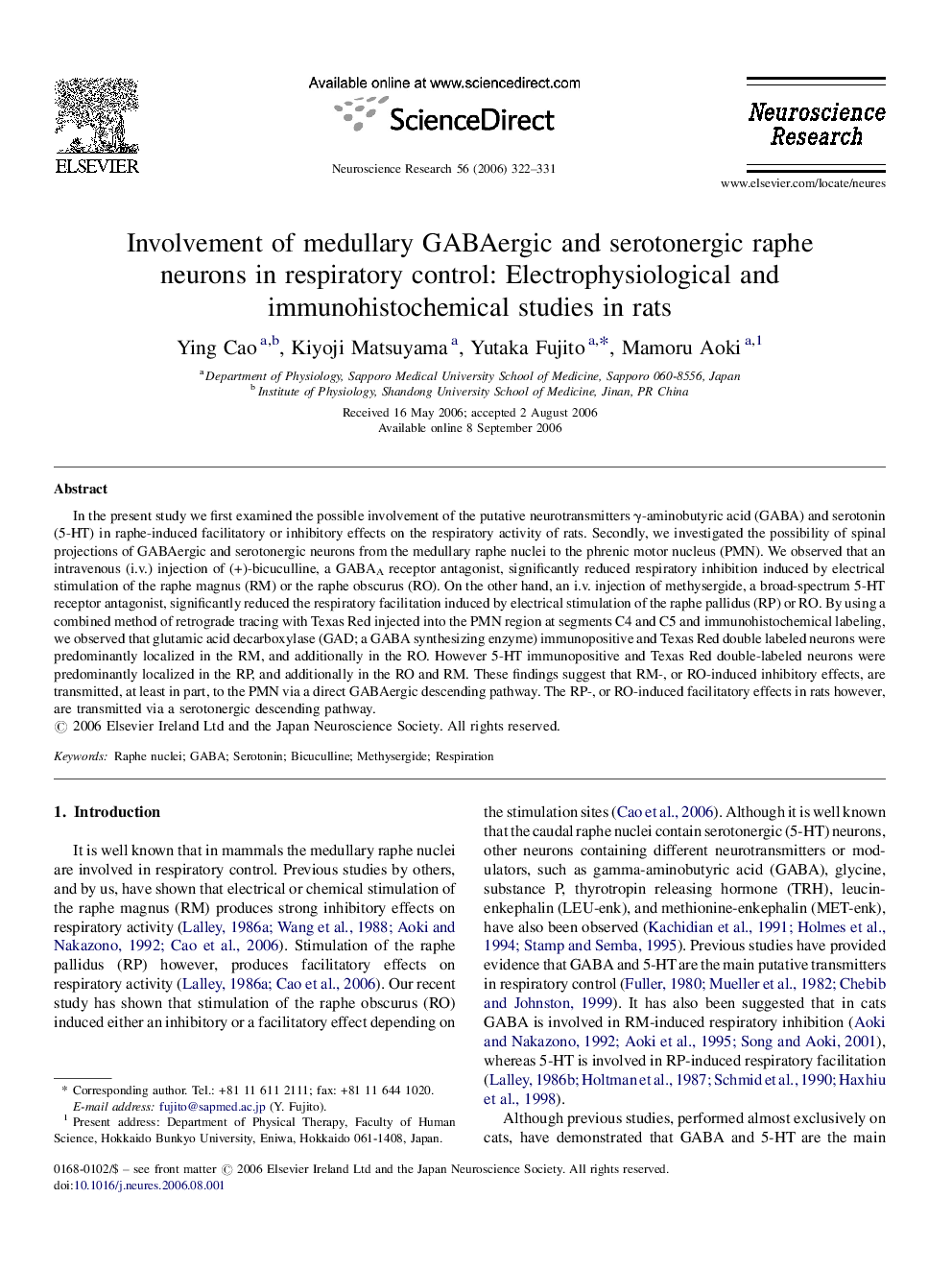| Article ID | Journal | Published Year | Pages | File Type |
|---|---|---|---|---|
| 4353188 | Neuroscience Research | 2006 | 10 Pages |
In the present study we first examined the possible involvement of the putative neurotransmitters γ-aminobutyric acid (GABA) and serotonin (5-HT) in raphe-induced facilitatory or inhibitory effects on the respiratory activity of rats. Secondly, we investigated the possibility of spinal projections of GABAergic and serotonergic neurons from the medullary raphe nuclei to the phrenic motor nucleus (PMN). We observed that an intravenous (i.v.) injection of (+)-bicuculline, a GABAA receptor antagonist, significantly reduced respiratory inhibition induced by electrical stimulation of the raphe magnus (RM) or the raphe obscurus (RO). On the other hand, an i.v. injection of methysergide, a broad-spectrum 5-HT receptor antagonist, significantly reduced the respiratory facilitation induced by electrical stimulation of the raphe pallidus (RP) or RO. By using a combined method of retrograde tracing with Texas Red injected into the PMN region at segments C4 and C5 and immunohistochemical labeling, we observed that glutamic acid decarboxylase (GAD; a GABA synthesizing enzyme) immunopositive and Texas Red double labeled neurons were predominantly localized in the RM, and additionally in the RO. However 5-HT immunopositive and Texas Red double-labeled neurons were predominantly localized in the RP, and additionally in the RO and RM. These findings suggest that RM-, or RO-induced inhibitory effects, are transmitted, at least in part, to the PMN via a direct GABAergic descending pathway. The RP-, or RO-induced facilitatory effects in rats however, are transmitted via a serotonergic descending pathway.
